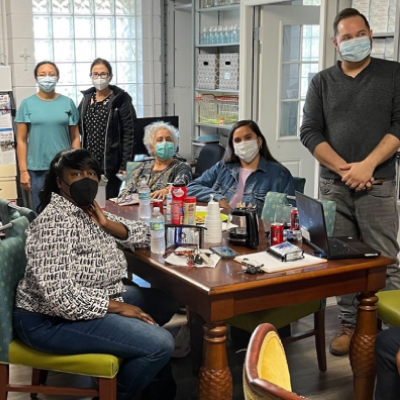- Who We Are
- Clinician Employment
- Publications
- Witness to Witness (W2W)
- Kugel & Zuroweste Health Justice Award
- Your Voice Matters: Photovoice Project
Wed, 10/12/2016 | by Claire Hutkins Seda


In 2010, a California woman was diagnosed with mercury poisoning from an unknown source. She experienced symptoms so generic that they were hard to relate specifically to mercury: irritability, headaches, mood swings, memory loss, and difficulty concentrating. The California Department of Public Health was called in to pinpoint the source. They interviewed the family using an extensive questionnaire and identified an artisanal face cream as the source of the mercury. Since then, the California Department of Public Health, Environmental Health Investigations Branch has identified at least 70 people affected by mercury-tainted creams, many of whom were children.
“Many of those affected, including children, were living in homes that were contaminated because of these creams but did not use the creams themselves”, explained CDPH’s Community Participation and Education Section Chief Lori Copan, RPh, MPH.
Latino immigrants are the population of concern in this issue. Most of those affected have been immigrants from Mexico, where the CDPH believes the tainted creams were produced. “There are unfortunately multiple brands, and some are not even branded,” noted Alcira Dominguez, MPA, Community Participation Specialist with the CDPH. Some had handmade labels while others were professionally manufactured. Some of the products were gifts to the patients from visiting friends or family, or sold informally among community members; other tainted face creams are apparently available for sale in stores in Mexico and elsewhere, or through the internet. “None of them list mercury as an ingredient,” Dominguez added.
Mercury is added to face creams as a whitening agent, skin spot remover, or acne treatment, but it can cause serious health implications, including neurological and behavioral disorders. As in the index case, the unspecific and common symptoms -- which can just as easily be attributed to more common concerns like stress -- can be easy to overlook or misdiagnose. Yet, there are two distinct patterns in the cases that have puzzled some patients’ clinicians and eventually led to a diagnosis. One is high blood pressure in children.
“You see a child slipping in developmental milestones like crawling, walking, or eating… [tasks] that require them to use their muscle coordination. That’s difficult to diagnose,” admits Copan. But in the case of young children demonstrating missed milestones who were eventually diagnosed with mercury poisoning, “every one of those children...had high blood pressure.”
A second indicator of mercury poisoning is muscular twitches. Patients report “the feeling of ants crawling down the leg, or down the back, and involuntary movements,” Copan described. Clinicians often refer these patients to a neurologist for neuromuscular testing, but the results are inconclusive, and the patients are left with a diagnosis of neurological issues of unknown etiology. “It doesn’t need to go as far as a neurologist,” emphasized Copan. “It’s very easy to test for mercury [with] a spot urine test.” (She notes that it is not recommended to take a blood sample, as blood tests will return readings of exposure to methylmercury most likely consumed via fish -- a different type of mercury than that the inorganic mercury used in face creams.)
The CDPH has been dedicated for over five years to getting this information out to clinicians, in hopes of avoiding another misdiagnosis. They’ve published in academic journals, released health alerts, made presentations at medical schools and promotora conferences, and have even run public service announcements on Univision, the popular Spanish-language television network. This month marks a pivot in the campaign to become even more proactive in assuring the creams don’t harm another family -- by beginning to sample creams themselves during educational events. Last week during Binational Health Week, CDPH called on community members to bring in their own creams to get tested, at the Mexican Consulate in Sacramento. They also offered an anonymous and voluntary survey, “so that we can collect data to characterize who is using the creams, where the creams come from, who is being affected, and what we can do about it,” Dominguez said. “We want to get dangerous creams out of people’s homes.”
Read CDPH’s article on the creams in the International Journal of Environmental Research and Public Health.
Learn more about CDPH’s work to prevent mercury poisonings on their website’s mercury page.
Like what you see? Amplify our collective voice with a contribution.
Got some good news to share? Send it to us via email, on Facebook, or on Twitter.
Return to the main blog page or sign up for blog updates here.







